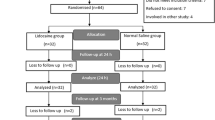Abstract
General guidelines for the maximum amounts of locally injected lidocaine exist; however, there is a paucity of data in the Mohs micrographic surgery (MMS) literature. This study aimed to determine the safety and adverse effects seen in patients that receive larger amounts of locally injected lidocaine. A retrospective chart review of 563 patients from 1992 to 2016 who received over 30 mL of locally injected lidocaine was conducted. Patient records were reviewed within seven postoperative days for complications. The average amount of anesthesia received was 40 mL, and the average patient weight was 86.69 kg. 1.4% of patients had a complication on the day of surgery, and 4.4% of patients had a complication within 7 days of the surgery. The most common complications were excessive bleeding/hematoma formation and wound infection. Only two complications could be attributable to local anesthetics. Gender, heart disease, hypertension, diabetes, and smoking were not significant risk factors for the development of complications. MMS is a safe outpatient procedure for patients that require over 30 mL of locally injected anesthesia. The safety of high volumes of lidocaine extends to patients with risk factors such as heart disease, hypertension, diabetes, and smoking.
Similar content being viewed by others
References
Lomas A, Leonardi-Bee J, Bath-Hextall F (2012) A systematic review of worldwide incidence of nonmelanoma skin cancer. Br J Dermatol 166(5):1069–1080
Kouba DJ et al (2016) Guidelines for the use of local anesthesia in office-based dermatologic surgery. J Am Acad Dermatol 74:1201–1219
Prickett KK, Wise SK, DelGaudio JM (2012) Cost analysis of office-based and operating room procedures in rhinology. Int Forum Allergy Rhinol 2(3):207–211
Harmatz A (2009) Local anesthetics: uses and toxicities. Surg Clin North Am 89(3):587–598
Rubin JP, Bierman C, Rosow CE et al (1999) The tumescent technique: the effect of high tissue pressure and dilute epinephrine on absorption of lidocaine. PlastReconstr Surg. 103:990–996 ((Discussion 997–1002))
Shalom A, Westreich M, Hadad E et al (2008) Complications of minor skin surgery performed under local anesthesia. Dermatol Surg 34:1077–1079
Alam M et al (2010) Safety of peak serum lidocaine concentration after mohs micrographic surgery: a prospective cohort study. J Am Acad Dermatol 63(1):87–92
Asgari MM, Olson J, Alam M (2012) Needs assessment for mohs micrographic surgery. Dermatol Clin 30(1):167–175
Koay J, Orengo I (2002) Application of local anesthetics in dermatologic surgery. Dermatol Surg 28(2):143–148
Eggleston ST, Lush LW (1996) Understanding allergic reactions to local anesthetics. Ann Pharmacother 30:851–857
Bhole MV, Manson AL, Seneviratne SL, Misbah SA (2012) IgE-mediated allergy to local anesthetics: separating fact from perception: a UK perspective. Br J Anaesth 108:903–911
Altinyazar HC, Ozdemir H, Koca R, Hosnuter M, Demirel CB, Gundogdu S (2004) Epinephrine in digital block: color doppler flow imaging. Dermatol Surg 30:508–511
Chowdhry S, Seidenstricker L, Cooney DS, Hazani R, Wilhelmi BJ (2010) Do not use epinephrine in digital blocks: myth or truth? Part II. A retrospective review of 1111 cases. Plast Reconstr Surg 126:2031–2034
Daublander M, Muller R, Lipp MD (1997) The incidence of complications associated with local anesthesia in dentistry. Anesth Prog 44:132–141
Butterwick KJ, Goldman MP, Sriprachya-Anunt S (1999) Lidocaine levels during the first two hours of infiltration of dilute anesthetic solution for tumescent liposuction: rapid versus slow delivery. Dermatol Surg 25:681–690
Childers CP, Maggard-Gibbons M (2018) Understanding costs of care in the operating room. JAMA Surg 153(4):e176233
LaBove G, Davison SP (2016) Cost analysis of an office-based surgical suite. Plast Reconstr Surg Glob Open 4(7):e803
Funding
LW receives research funding from the Skin Cancer Foundation and the Dermatology Foundation.
Author information
Authors and Affiliations
Corresponding author
Ethics declarations
Conflict of interest
None of the authors have any conflicts of interest.
Ethical approval
Institutional review board approval was obtained.
Additional information
Publisher's Note
Springer Nature remains neutral with regard to jurisdictional claims in published maps and institutional affiliations.
Rights and permissions
About this article
Cite this article
Patrinely, J.R., Darragh, C., Frank, N. et al. Risk of adverse events due to high volumes of local anesthesia during Mohs micrographic surgery. Arch Dermatol Res 313, 679–684 (2021). https://doi.org/10.1007/s00403-020-02155-1
Received:
Revised:
Accepted:
Published:
Issue Date:
DOI: https://doi.org/10.1007/s00403-020-02155-1



